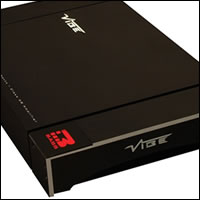Top of the Class
Adam Rayner unscrews the inscrutable world of amps for cars and how they drive music.
The very first question anyone asks about nearly anything to do with audio is ‘How many watts, mate?’ As most people know that the really exciting sound of music reproduced is all about scale and might and clarity. Everyone has heard a weedy home ‘hifi’ system from the high street. Usually all silvery, they bulge and roar nastiness at parties. Then as you grow up, you might end up at a party with a serious sound system. Some of the best will be in clubs. So we know that watts are what you measure the amount of sound likely to come out in.
However, while anyone can have an opinion on what makes a good sound when they hear it, as long as they have no hearing health issues, the actual facts about amps and how you rate their performance and how loud they go can be a thorny issue.
There are two Big Things for a car amplifier. The first is its fidelity or how close it gets to being that legendary straight wire with gain and is all about the clarity things. Specifications to do with this side are all about how low the THD (total harmonic distortion) figures are and stuff like channel separation and signal to noise ratio. The other is all about how the watt maker gets juice to the bits inside (the output devices as they are termed) that actually make the watts and how well it does this. This is the efficiency of the amp and a ‘normal’ one is good for only less than 50%! The rest of your power is turned into heat and wasted to the air via the amp’s heatsink.
It’s also an issue in home hifi. The maddest-end amps actually have batteries and run from DC by way of mains hum reduction! There is a famous home audio brand (Mission) that sold amplifiers for home use that could be accessorised by adding an extra power supply unit to beef up the power that was in the same size chassis as the amplifier itself. So it is an issue indoors as well as in a car.
However, the margin of power available for audio accessories upon your car’s alternator is a far more drastic limiter than home mains, so the issue of how efficiently an amplifier for your car makes use of the few amperes of 12Volt is has available is an issue of epic importance.
This is all about the cunning amp power supply method called Class GH that Vibe are using in their Black Box 4 and 5 amplifiers.
Class GH is a term used to describe the newest development in car audio amplifier power supply design. It is a little complex and is all about actually having two power supplies just like a fish has two kinds of muscle. The soft brown meat along the flanks of your best Scottish kipper is the normal swimming muscle. The rest of your breakfast is the muscle used for bursts of power.
Likewise a Class GH Vibe amplifier uses the power available to it in such a way as to make the power of the output simply better and more able to rock your world under real conditions than any other design currently on the market. Great if you can afford a bank of batteries big enough to dissolve a body in, or can afford to fit a whacker of an extra alternator. But for real world users, Class GH isn’t just letters on the outside of the box, it means more of what you bought an amplifier for.
The Science Bit
Only read this if you are as geeky as me!
Class G operation involves changing the power supply voltage from a lower level to a higher level when larger output swings are required. This involves a single class AB output stage that is connected to two power supply rails by a transistor switch. The design is such that for most musical program material, the output stage is connected to the lower supply voltage, and automatically switches to the higher rails for large signal peaks.
Using two power supplies improves efficiency enough to allow significantly more power for a given size and weight.
Class H operation takes the class G design one step further and actually modulates the higher power supply voltage by the input signal. This allows the power supply to track the audio input and provide just enough voltage for optimum operation of the output devices.
Class GH operation is a hybrid technology combining characteristics of both Class G and Class H
While the higher power supply is not modulated by the input signal as it would be in a full Class H design, it does track the audio signal resulting in a soft switch between power supplies making our amplifiers mostly Class G with some Class H technology.
In Layman’s Terms
2 x Class AB power supplies connected to a single Class AB output stage ensuring superb sound quality as the amplifier is Class AB throughout but with similar efficiency to a Class D
Benefits of Class GH vs Class D
Damping factor is 20 times better than a Class D and distortion is 20 times lower (0.01%), this is mainly down to the process of converting the input signal to PWM (pulse width modulated waveform) and converting back to analogue in a Class D introduces a great deal of distortion.
Signal to Noise Ratio of 114dB unheard of in a Class D
(With thanks to Rob Gurney for the clever science bit at the end as he’s cleverer than me.)

